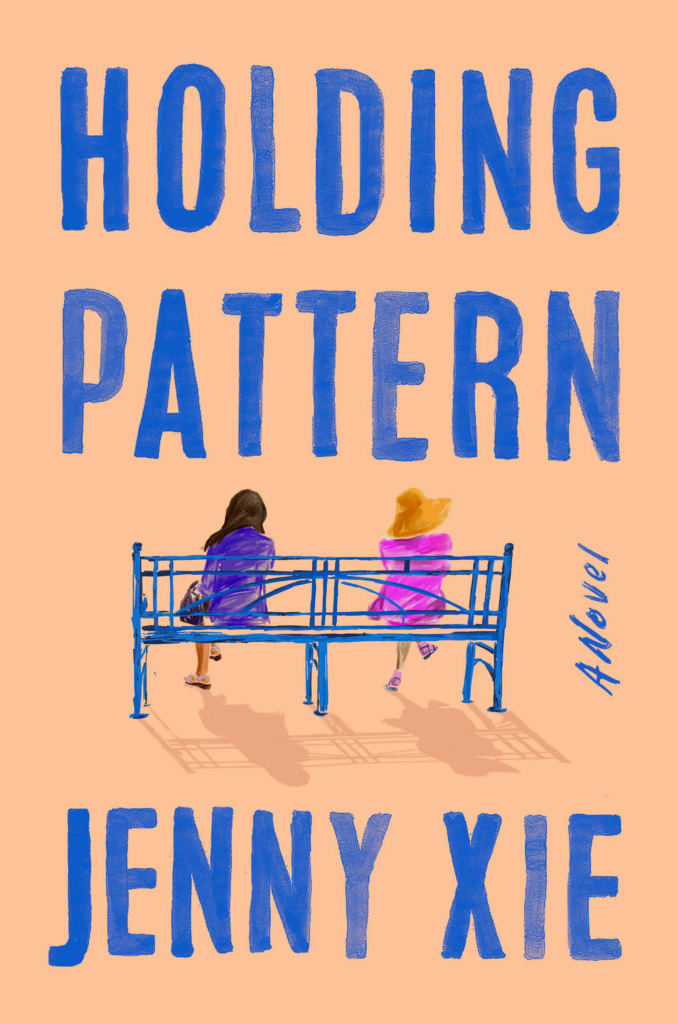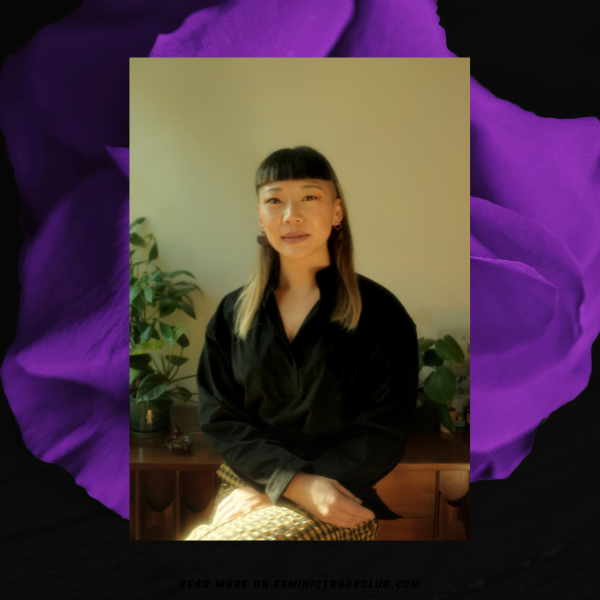Holding Pattern by Jenny Xie marinates on mother/daughter relationships with Marissa and Kathleen. Kathleen signs up to be a professional cuddler (which is a real thing) which opens her world to grief, acceptance, and healing.
In my conversation with Jenny Xie, I asked about creating a connection between Marissa and Kathleen, how Jenny’s work as a professional cuddler inspires Kathleen’s work, and not making Kathleen feel like a monolith as an Asian woman.
- I always like to start my interviews by asking what is your definition of feminism?
Feminism protects the rights, privileges, and freedom of women and non-binary folks. Under feminism, all people are deserving of respect, dignity, and love, which makes it inherently anti-patriarchal, anti-racist, and anti-capitalistic, since these conjoined structures of power work to strip away the humanity of the marginalized to protect their own interests.
- How did you create the connection between Marissa and Kathleen as mother and daughter, particularly as immigrants?
I’ve always been fascinated by mother-daughter relationships—that deep, urgent love that’s immediately complicated by societal pressures on girls and women and what roles they’re allowed to play. Marissa and Kathleen tussle with their own version of that, dealing with resentment, anger, guilt, and gratitude by turns as they confront the ways they’ve both failed and shown up for each other over the years. The fact that they’re immigrants, divided by culture, amplifies that conflict because it gives each of them worldviews that are incompatible and incomprehensible to the other, but at the same time keeps them bound through a shared experience of otherness.
- How did your work as a professional cuddler inspire Midas Touch, where Kathleen signs up to be a “certified cuddler provider?”

I learned about professional cuddling years before I started writing Holding Pattern. The services I found while doing research all had a vaguely illicit, ad hoc quality, and I wanted Midas Touch to be the unsettling opposite of that—a well funded startup with slick branding. It wasn’t until the later drafts of the book that I had time to be a cuddler myself. It’s been an illuminating experience in terms of understanding the physical and emotional experience of holding a stranger, and learning how to parse the intimacy and pleasure involved in a platonic, transactional act. The work helped me shape Kathleen’s encounters at Midas Touch and her responses to them, from the tender to the fraught.
- A sweater is an emblem for someone who is grieving. Why did you use a sweater to mark time and reflection in this story?
The clothes of people we love are super-charged with meaning, especially if that loved one is gone. A well loved, lived-in sweater is a tangible artifact. It can carry someone’s scent or hold their shape, and conjures up memories of all the times they put it on. It signifies a certain style, a period of time. In the book, the sweater holds so much power that it becomes a kind of costume, allowing various characters to animate a fantasy or escape their own life when they put it on.
- What characteristics did you want to give LB, Kathleen’s dear friend?
I had a lot of fun writing LB. She’s smart, self-assured, daring, vivacious—the type of friend you can count on to get you in trouble, but also to get you out of it. Kathleen can be a bit morose; I wanted someone to pull her out of her head from time to time.
- Kathleen talks about her exhaustion from being thought of as a monolith among Asian women. What was giving Kathleen the space to express the exhaustion like? How does she evolve in the story?
Kathleen is well acquainted with the experience of having her identity eclipsed by ethnicity, and I wanted to portray that kind of exhaustion realistically: she clocks when it happens, but chooses when to engage. She’s always been wary about how she’s perceived. As the story progresses and Kathleen becomes more embedded in her mom’s social life, however, she realizes that she has also underestimated the Asian women around her, though in a different way. In that sense, Kathleen learns to be less protective and more perceptive overall—more open to possibility.
- What organization would you like to amplify to our audience?
The Freya Project is an amazing NYC-based organization started by Nonie Brzyski and Natalka Burian. For each event, they invite women and non-binary folks to tell stories according to a theme, raising funds for community nonprofits that work in reproductive rights, gun control, alleviating climate change, and more.
Thank you, Jenny Xie, for speaking with Feminist Book Club about Holding Pattern.


